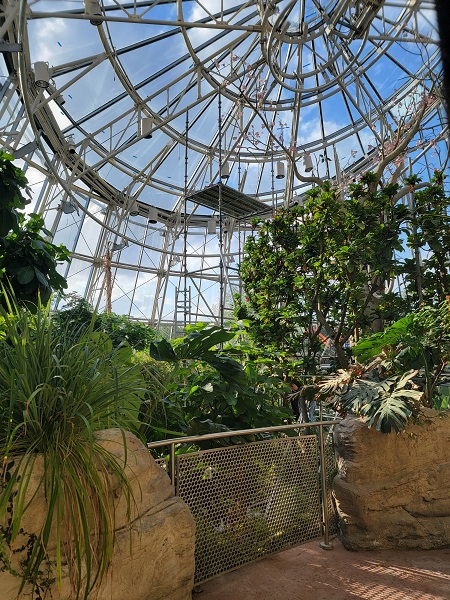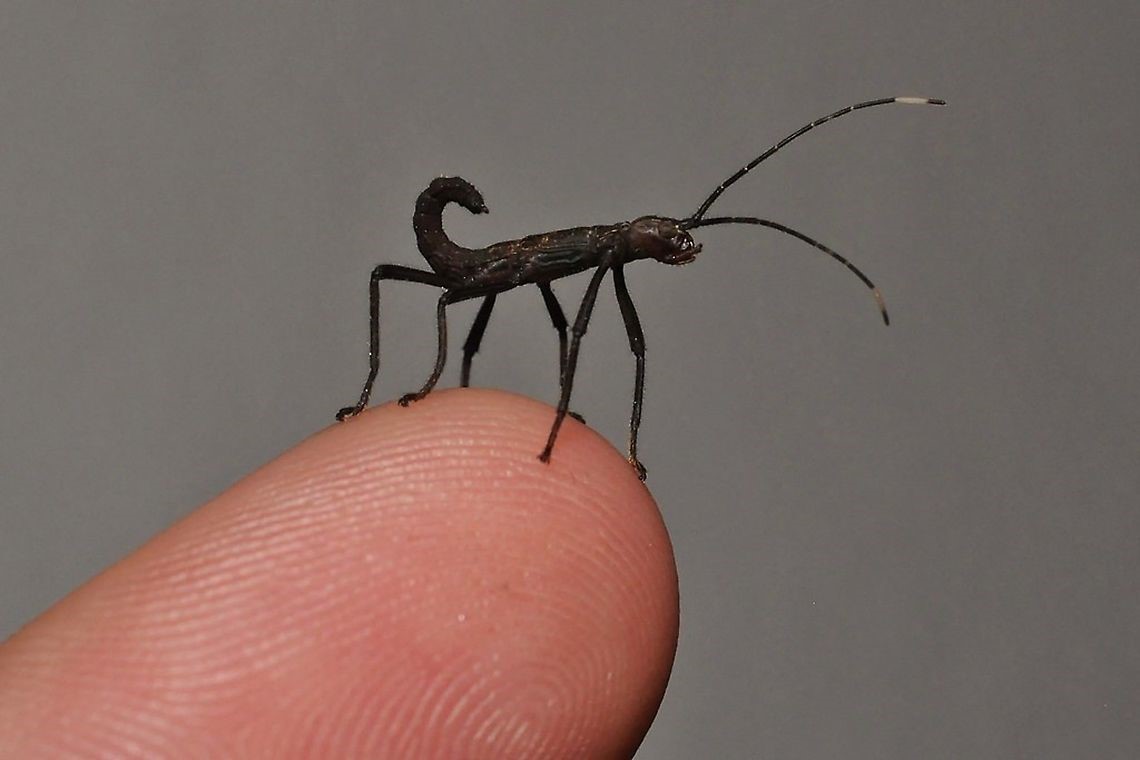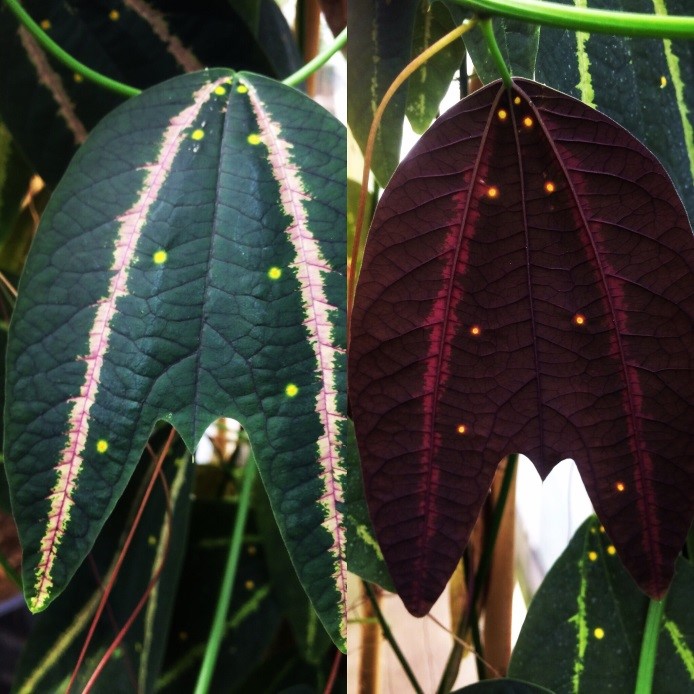The Cockrell Butterfly Center (CBC) is most well known for its free-flying butterflies inhabiting a three-story indoor rainforest. But there are many other cool things to see and experience at the CBC! We checked with staff members and asked them about their favorite sections of the center, and this is what they said:
Lauren – Lauren is the butterfly entomologist and she takes care of the 800 to 1,000 imported butterflies we receive every week. Her staff picks are the chrysalis emergence chambers. The emergence chambers showcase thousands of live chrysalids of every size, shape and color imaginable! Many have gold spots or flecks. The word “chrysalis” comes from the Greek word for gold, “chrysós.” If you watch carefully you can even observe butterflies emerging, leaving an empty chrysalis shell behind, which they cling to while their wings stretch and dry.
Erin – Erin is a board certified entomologist and is the insect zoo manager. She cares for all the non-butterfly bugs in the CBC. Her staff pick is the eastern lubber grasshopper sculpture found at the entrance of the entomology hall. The larger-than-life sculpture shows the anatomical details of the grasshopper’s body parts on one side, like the head, thorax, abdomen, wings and antennae. On the other side it shows a cross-section, displaying the insect’s internal organ systems. It’s a great visual introduction of what makes an insect, an insect.
Nancy – Nancy is the director of the CBC. Her staff-pick is spicebush caterpillar sculpture found in the entrance of the butterfly center. The giant caterpillar welcomes each visitor into the butterfly center and is a great opportunity for photos! It may seem cartoon-ish, but the sculpture is actually a very realistic representation of the caterpillar that can be found right here in Houston! The large eye-spots on the back of the caterpillar function to trick or scare away predators by making it appear like a bigger animal.
Soni – Soni is the horticulturist that grows and cares for all of the plants in the CBC rainforest. Her staff pick is the Pride of Trinidad tree in the rainforest. The Pride of Trinidad (Warszewiczia coccinea) is native to Central and South America and the West Indies and is the national tree of Trinidad. The best part of this tree are its showy, flowering branches. Each flower cluster is accented with a red bract and is loaded with nectar. Inside the CBC rainforest, the Pride of Trinidad is in bloom year round and is constantly feeding a variety of butterflies!

Soni shows off a cluster of flowers on the Pride of Trinidad that feeds many of the butterflies in the CBC rainforest.
Ryan – Ryan is the CBC Bugs-On-Wheels outreach presenter. He travels to schools, day-cares, camps, and clubs to present a variety of bug-related topics (check them out here: Bugs-On-Wheels). His staff pick is the vinegaroon (Mastigoproctus giganteus). This scary looking arachnid is actually quite harmless and easy to handle. They get their name from their defense mechanism. If threatened, glands near the rear of the abdomen can spray acetic acid which has a vinegar-y smell and may dissuade predators from making the vinegaroon their lunch!
Farrar – Farrar is the curatorial entomologist. He identifies and documents the thousands of species in the CBC’s entomology collection. His staff-pick is the beetle specimen display in the entomology hall. Beetle species make up almost 25 percent of all known animal species. They are found in almost all major natural habitats and are adapted to practically every kind of diet. The British biologist and atheist J.B.S. Haldane once said, when asked whether studying biology had taught him anything about the Creator: “I’m really not sure, except that He must be inordinately fond of beetles.” This quote lines the top of the beetle display in the CBC.
Celeste – Celeste is the butterfly rearing coordinator. She breeds and raises butterflies for the CBC. Her staff pick is Charro, the CBC’s resident iguana! Charro is a Green Iguana (Iguana iguana). Despite this name, he is actually bright orange! Green Iguanas can be a variety of colors depending on what region they come from. Charro can be found relaxing in his enclosure in the rainforest or sunning himself outside the butterfly center by the demo garden. After hours, Charro gets to wander the entire rainforest freely. Don’t worry about the butterflies; Charro is strictly vegetarian.
Next time you visit the CBC make sure to check out all these staff picks, and take time to pick YOUR favorite part of the CBC!













